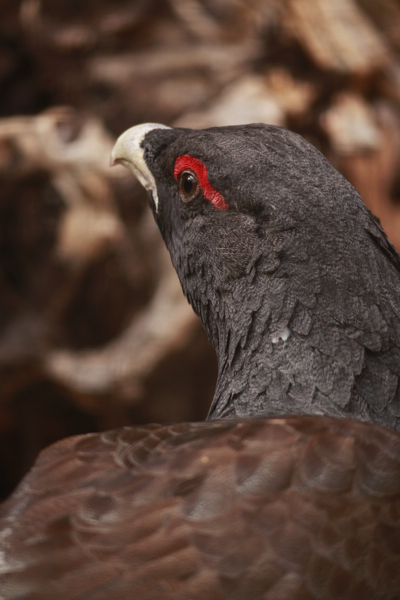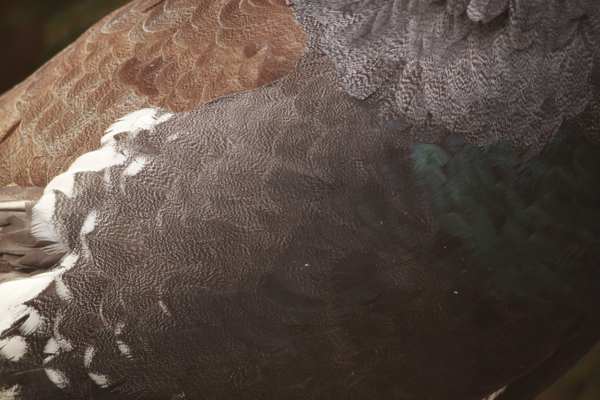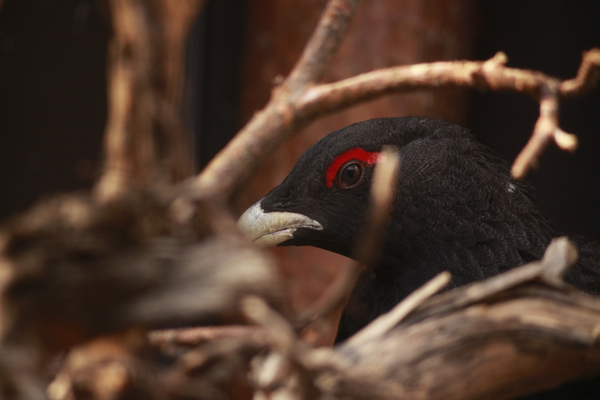The Capercaille
The Western Capercaille (Tetrao urogallus) is one of the most emblematic birds of the Alps, amongst the people of the Alps, it is probably just behind the Golden Eagle. This is partly because it really is large and beautiful, secretive and shy. But to be honest it is probably because it is part of the “Hochwild“, the game that was traditionally reserved for royalty and the nobles.

Capercaille digiscoped (c) Dale Forbes with Swarovski Optik STM80HD scope, TLS800 adapter, Canon 5DmarkII.
The Capercaille is really big: a metre long and weighing over 6kgs (3ft, 15lbs). This is one big big bird. And has a soft spot for berries (check out the red tint on the bill above). The beautiful black plumage and terracota/colorado mantle help it blend in to the forest undergrowth, but the subtle iridescent greens (see photo below) really add to the spectacle.
…but check out the beautiful great fan of a tail that the Capercaille displays at its lek. And how the birds go at each other.
Evidently, the Capercaille needs a rather specific set of habitat features in order to thrive: old mixed conifer forests with a high diversity both in terms of micro-habitats (deep shade, thin canopy, regrowth, thick undergrowth, open undergrowth…) and consequent species diversity. Approximately 37% of Tirol is forested, the vast majority of this not really forest, but plantation managed for wood productivity, clear felled when the crop is ready. It is always tough to balance the resource needs of people and maintaining real ecosystems and species assemblages.
The lek time here is normally around April/May and I am hoping to get out next spring to see if I can see them lekking. Boy would that be awesome. These photos are from our local “Alpine Zoo” (Innsbrucker Alpenzoo). Zoos make great spots to practice digiscoping and get some great photos that are very very tough to get in the field (your local duck pond, and a garden bird feeder are other great places to practice digiscoping).
Happy birding,
Dale Forbes




Great post again Dale. It’s one of the most difficult birds to see well in Britain – usual views are of a female crashing through branches never to be seen again!
Super photos, Dale! I’d love it if you could show me one of these some day. I never managed to see one while living in Freiburg, Germany for a year. It’s actually quite astonishing to think that some prehistoric charismatic megafauna like this didn’t become extinct some 500 years ago.